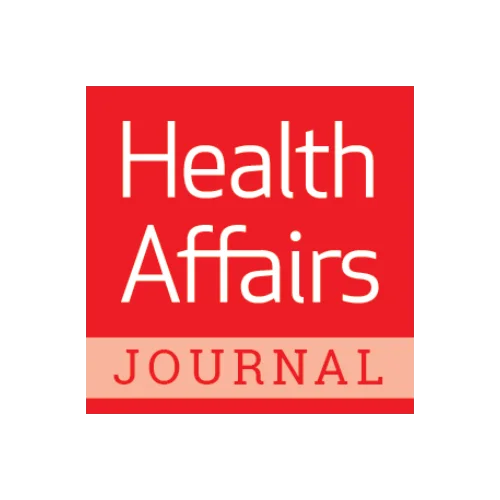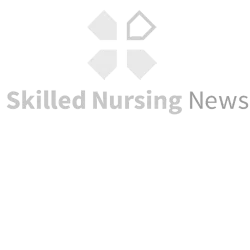PBJ research report and related news:

Daily Nursing Home Staffing Levels Highly Variable, Often Below CMS Expectations
Staffing is an important quality measure that is included on the federal Nursing Home Compare website. New payroll-based data reveal large daily staffing fluctuations, low weekend staffing, and daily staffing levels often below the expectations of the Centers for Medicare and Medicaid Services (CMS). These data provide a more accurate and complete staffing picture for CMS and consumers.
Geng, Fangli, et al. “Daily Nursing Home Staffing Levels Highly Variable, Often Below CMS Expectations.” Health Affairs, vol. 38, no. 7, 2019, pp. 1095–100. Crossref, www.healthaffairs.org/doi/10.1377/hlthaff.2018.05322.

Study finds nursing homes rarely have enough RNs on staff
RN staffing levels fall much lower than CMS standards in most nursing homes, according to a study published July 1 in Health Affairs.
“Seventy-five percent of nursing homes were almost never in compliance with what CMS expected their RN staffing level to be,” the study’s authors wrote. They also found half of skilled nursing facilities only met standard staffing benchmarks on 19 days or fewer between April 2017 and March 2018.
Kommers, Anne-Marie. “Study Finds Nursing Homes Rarely Have Enough RNs on Staff.” Becker Hospital Review, 2 July 2019, www.beckershospitalreview.com/post-acute/study-finds-nursing-homes-rarely-have-enough-rns-on-staff.html.

Nursing Home Staffing Shows Wide Fluctuations, New Research Shows
New research published in July’s issue of Health Affairs finds wide variability in nurse staffing at U.S. nursing homes.
Across all types and sizes of facilities and all nurse levels, there is variations in the staffing of nursing home facilities. Among the primary findings in the study, in which David Stevenson, PhD, a professor of health policy at VUMC, is low weekend staffing and daily staffing levels that often fall well below the expectations of the Centers for Medicare and Medicaid Services (CMS), all of which can increase the risk of adverse events for residents.
The study is among the first to use new payroll-based journal (PBJ) data that CMS began collecting in 2016 as part of requirements in the Affordable Care Act. Prior to 2016, staffing levels at nursing homes were self-reported and unaudited, making the data questionable and at risk for error or bias.
“Nursing Home Staffing Shows Wide Fluctuations, New Research Shows | Department of Health Policy.” Vanderbilt University, 2 July 2019, www.vumc.org/health-policy/nursing-home-nurse-staffing-data-research.

Nurse Staffing at Nursing Homes Is Lacking
Nursing homes only met nurse staffing requirements less than 60% of the time, a new analysis finds.
When patients are admitted to a nursing home, it’s usually because they’re unable to care for themselves at home. While it’s a difficult choice, families often make the decision to ensure their loved ones get the care and assistance they need.
But a new analysis of payroll-based staffing data for U.S. nursing homes, uncovered large daily staffing fluctuations, low weekend staffing, and daily staffing levels that often fall well below the expectations of the Centers for Medicare and Medicaid Services.
HealthLeaders. “Nurse Staffing at Nursing Homes Is Lacking.” HealthLeaders Media, www.healthleadersmedia.com/nursing/nurse-staffing-nursing-homes-lacking-0

New data resource reveals highly variable staffing at nursing homes
Researchers who analyzed payroll-based staffing data for U.S. nursing homes discovered large daily staffing fluctuations, low weekend staffing and daily staffing levels that often fall well below the expectations of the Centers for Medicare and Medicaid Services, all of which can increase the risk of adverse events for residents.
A study published in the July issue of Health Affairs paints a picture of the staffing levels of nurses and direct care staff at nursing homes based on a new CMS data resource, the Payroll-Based Journal, or PBJ. CMS has been collecting data from nursing homes since 2016 to meet a requirement of the Affordable Care Act, and PBJ data has been used in the federal Five-Star Quality Rating System for Nursing Homes since April 2018.
Lagasse, Jeff. “New Data Resource Reveals Highly Variable Staffing at Nursing Homes.” Healthcare Finance News, 3 July 2019, www.healthcarefinancenews.com/news/new-data-resource-reveals-highly-variable-staffing-nursing-homes.

Nursing Home Residents at Risk: Study Finds Significant Understaffing in 75% of Skilled Nursing Facilities
A recent study found significant understaffing in 75% of nursing facilities across the country, raising concerns about the level of care patients receive.
The Harvard and Vanderbilt study, published in the July issue of the Journal of Health Affairs, used data from the Payroll Based Journal (PBJ) to analyze the staffing levels of more than 15,000 facilities. The study examined the staffing levels of registered nurses (RN), licensed practical nurses (LPN), and nurse aides, relative to the number of nursing home residents who rely on their care.
Understaffing is an ongoing issue for nursing facilities.
“Nursing Home Residents at Risk: Study Finds Significant Understaffing in 75% of Skilled Nursing Facilities.” The National Law Review, 22 July 2019, www.natlawreview.com/article/nursing-home-residents-risk-study-finds-significant-understaffing-75-skilled-nursing

‘Staggering’ 75% of nursing homes almost never meet expected RN staffing levels, study finds
Three-fourths of the nation’s nursing homes never meet federal staffing expectations for registered nurse staffing, and RNs are often missing from such facilities on the weekends, according to a new review of a year’s worth of payroll data.
The research also found that 70% of facilities self-reported higher total direct staffing under the CASPER system than in the now-standard Payroll-Based Journal. The discrepancy was most pronounced at for-profit facilities, followed by non-profits and then government-run buildings.
Researchers from Harvard and Vanderbilt medical schools examined records from 15,399 nursing homes covering April 2017 through March 2018. Their results were published online by Health Affairs Monday afternoon.
Marselas, Kimberly. “‘Staggering’ 75% of Nursing Homes Almost Never Meet Expected RN Staffing Levels, Study Finds.” McKnight’s Long-Term Care News, 2 July 2019, www.mcknights.com/news/staggering-75-of-nursing-homes-almost-never-meet-expected-rn-staffing-levels-study-finds.

75% of Nursing Homes ‘Almost Never’ in Compliance with RN Staffing Levels
The gulf between self-reported and payroll-based staffing records for nursing homes continues to widen, with a new study showing a reality that vastly differs from government expectations.
The amount of registered nurse (RN) coverage falls well below the standards set by the Centers for Medicare & Medicaid Services for most skilled nursing facilities in the country, a team from Harvard and Vanderbilt University reported in a study published Monday in the July issue of the journal Health Affairs.
Spanko, Alex. “75% of Nursing Homes ‘Almost Never’ in Compliance with RN Staffing Levels.” Skilled Nursing News, 1 July 2019, skillednursingnews.com/2019/07/75-of-nursing-homes-almost-never-in-compliance-with-rn-staffing-levels.

RN staffing is inadequate: study
An analysis of a year’s worth of payroll data has revealed that as many as 75% of U.S. nursing homes do not meet federal expectations for registered nurse staffing.
Investigators from Harvard and Vanderbilt also said that 7 out of every 10 facilities self-reported higher total direct staffing levels than could be verified in the now-standard Payroll-Based Journal.
Berklan, James. “RN Staffing Is Inadequate: Study.” McKnight’s Long-Term Care News, 1 Aug. 2019, www.mcknights.com/print-news/rn-staffing-is-inadequate-study


